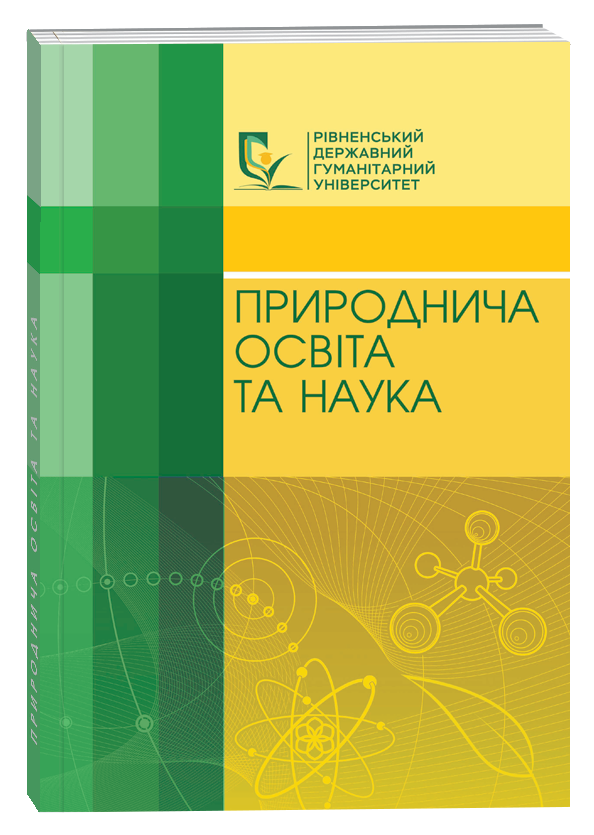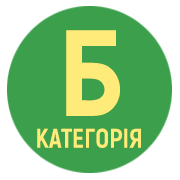PECULIARITIES OF TECHNICAL AND TACTICAL TRAINING OF FEMALE ATHLETES IN UKRAINIAN NATIONAL MARTIAL ARTS
Abstract
The article examines the issue of optimizing the technical and tactical training of female athletes in the Ukrainian national form of martial arts – the Cossack Fight. The formation of modern national single combat – Cossack Fight, based on traditional Ukrainian martial culture, is shown. The data of modern scientific literature on optimization of women’s sports training were analyzed. The training activity of qualified female athletes in the Cossack Fight (competitive division – hertz 3) was studied. The sample of this study included 28 qualified female athletes from the Ukrainian national form of martial arts, the Cossack Fight (competitive division Hertz 3), with the following characteristics: age 17–24 years. Qualification level of the participants: 2 masters of sports of Ukraine, 8 candidates for master of sports of Ukraine and 18 sportswomen of the 1 category. Comparison of indicators of technical and tactical preparedness of the groups at the end of the study also shows greater shifts in the experimental group (>0.05). This especially applies to the ability to build tactics (t=2.40; p<0.05), as the coefficients of attacking and defensive actions have a greater range of their application in the experimental group. The use in the training process of technical and tactical training of significant and heavy loads in the postmenstrual and postovulatory phases of a specific biological cycle and reducing the load in other phases of the OMC contributes to the reliable growth of the most informative indicators of the technical and tactical preparedness of female Cossack dueling athletes. When planning the system of women's technical-tactical training in Ukrainian national martial arts, it is advisable to take into account the specific biological cycle, which contributes to increasing the effectiveness of competitive activities during the annual training cycle.
References
2. Ашанін В. С., Литвиненко А. М. Побудова інформаційних моделей змагальної діяльності в бойовому хортингу. Науково-методичні основи використання інформаційних технологій в галузі фізичної культури і спорту: збірник наукових праць [Електронний ресурс]. Харків. ХДАФК, 2022. Випуск 6. С. 10–16.
3. Воронцов А. І. Метод спряження техніко-тактичної підготовки зі швидкісно-силовою підготовкою в тренуванні дівчат та юніорок в боксі. Науковий часопис Національного педагогічного університету імені М. П. Драгоманова. Київ, 2020. № 7(127). С. 29–33. DO I 10.31392/NPU-nc.series 15.2020.7(127).05.
4. Литвиненко А. М. Дихальні вправи в фізичному вихованні студентів-єдиноборців. Матеріали XV Міжнародної наукової конференції «Проблеми і перспективи розвитку спортивних ігор і єдиноборств у вищих навчальних закладах», м. Харків, 8–9 лютого 2019 року. С. 40–42.
5. Литвиненко А. М., Губницька Ю. С. Оцінювання технічних дій в національному виді єдиноборств – хортингу у змагальному розділі «Двобій». Теорія і методика хортингу: зб. Наукових праць. Київ, 2018. Вип. 8. С. 132–138.
6. Литвиненко А. М., Мулик В. В. Загальна фізична підготовка в українських національних видах спортивних єдиноборств. Науковий часопис Національного педагогічного університету імені М. П. Драгоманова. Випуск 3 (175) 2024. С. 119–124. DO I: https://doi.org/10.31392/UDU -nc.series15.2024.3(175).21.
7. Литвиненко А. М., Мулик В. В. Ефективність змагальної діяльності в хортингу. Єдиноборства. Харків. 2023. № 4(30). С. 59–68. DO I 10.15391/ed.2023-4.06.
8. Литвиненко А. М. Особливості спортивної підготовки у козацькому двобої. Науковий часопис Національного педагогічного університету імені М. П. Драгоманова. Київ, 2023. № 12(172). С. 127–131. DO I 10.31392/UDU -nc.series15.2023.11(171).22.
9. Мулик В. В. Сучасні аспекти побудови тренувального процесу спортсменок. Слобожанський науково-спортивний вісник. Харків, 2016. № 5(55). С. 57–62. doi:10.15391/snsv.2016-5.010.
10. Платонов В. М. Сучасна система спортивного тренування. Київ, 2020. 704 с.
11. Шахліна Л. Я-Г. Сучасний погляд на проблему синдрому «тріада жінки-спортсменки». Спортивна медицина, фізична терапія та ерготерапія, 2021, 1: 3–13. DO I: https://doi.org/10.32652/spmed.2021.1.3-13.
12. Шахліна Л. Я-Г., Чистякова М. О., Авінов А. В. Особливості спеціальної роботоздатності спортсменок високої кваліфікації, які спеціалізуються у дзюдо, в різні фази менструального циклу. Спортивна медицина, фізична терапія та ерготерапія. 2022, № 2. 39–40. https://doi.org/10.32652/spmed.2022.2.39-44.
13. Lytvynenko A. M. The History of the development of Ukrainian species of Martial Sports. SWorldJournal. Issue 23/Part 3. Р. 96–103. DO I: 10.30888/2663-5712.2024-23-00-003.
14. Lytvynenko A. M., Mulyk V. V. Analysis of the process of emergence and development trends of Ukrainian and Eastern national types of martial arts.Slobozhanskyi Herald of Science and Sport. Kharkiv, 2023. № 27(4). Р. 168–174. DO I.10.15391/snsv.2023-4.
15. Badenhorst C. E., Goto K., O’Brien W. J., Sims S. Iron status in athletic females, a shift in perspective on an old paradigm. Journal of Sports Sciences, 2021. 39(14), 1565–1575. Scopus. https://doi.org/10.1080/02640414.2021.1885782.
16. Tyshchenko Valeria, Karaulova Svitlana, Lytvynenko Andrii. Influence of Hand-to-Hand Combat Training on Functional Fitness of Cadets at Higher Educational Establishments of the Ministry of Internal Affairs. Slobozhanskyi Herald of Science and Sport. Vollum 28 No. 1, 3–13 2024 DO I: https://doi.org/10.15391/snsv.2024-1.001.
PDF Downloads: 42






